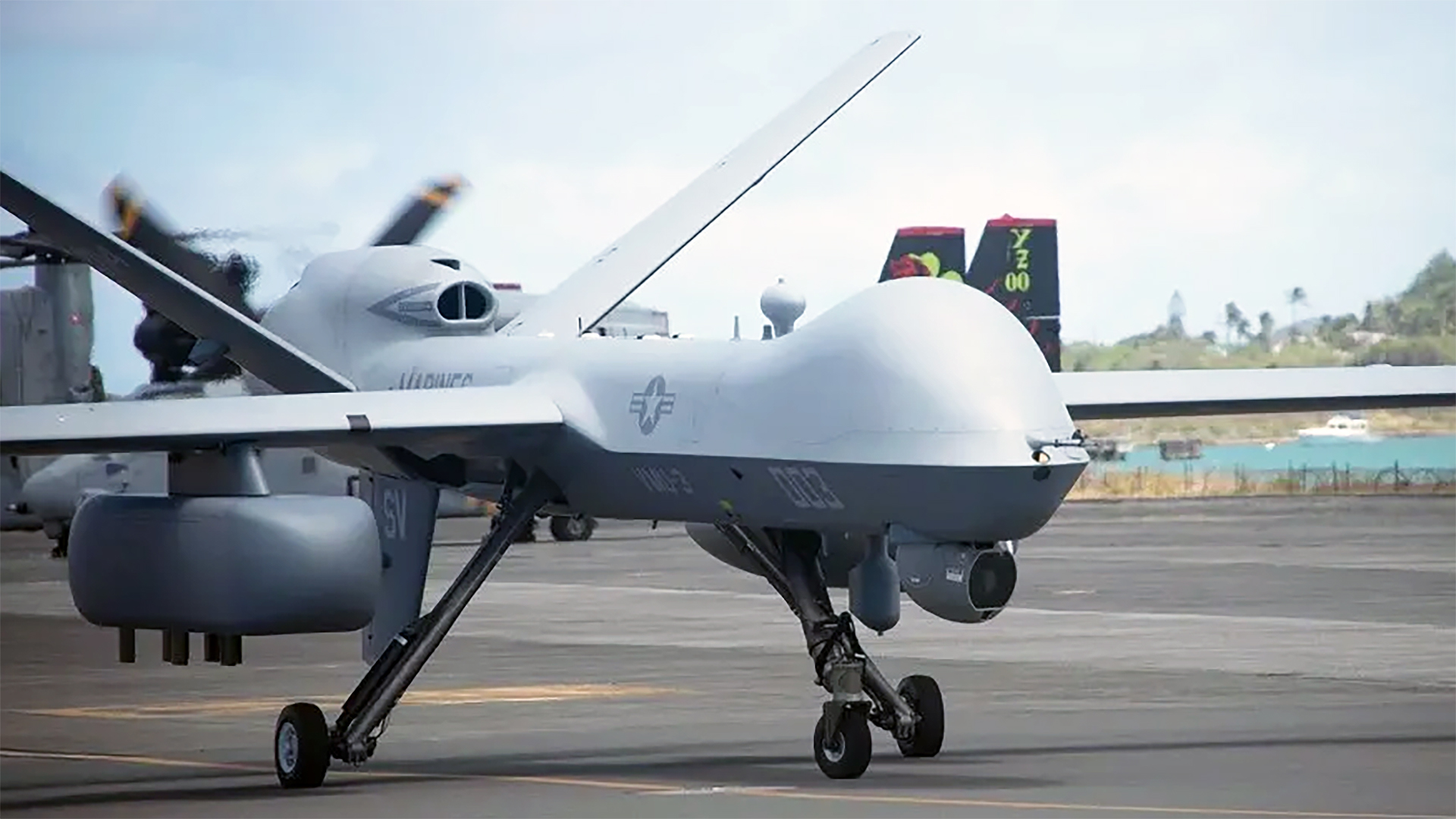To keep its small fleet of MQ-9 Reaper drones relevant in a fight against a foe like China, the U.S. Marine Corps has added a pod designed to help shield it from enemy sensors and support friendly forces in the region at the same time.
The electronic warfare pod “can mimic, I’ll be careful here, it can mimic things that are sent to it that it detects, turn it around and send it back,” Gen. Eric M. Smith, the Commandant of the Marine Corps, told a Brookings Institution forum on Tuesday. “So it becomes a hole. A black hole. It becomes mostly undetectable.”
The Reaper Defense Electronic Support System / Scalable Open Architecture Reconnaissance (RDESS/SOAR) pod gives the MQ-9s “the ability to somewhat disappear off of enemy radar,” Smith added, declining to elaborate for security reasons because it is a classified device. Sensing an enemy’s radar emissions and sending false signals back to the receiver is a core tenant of electronic warfare, one capability of many a system like this is likely to possess.
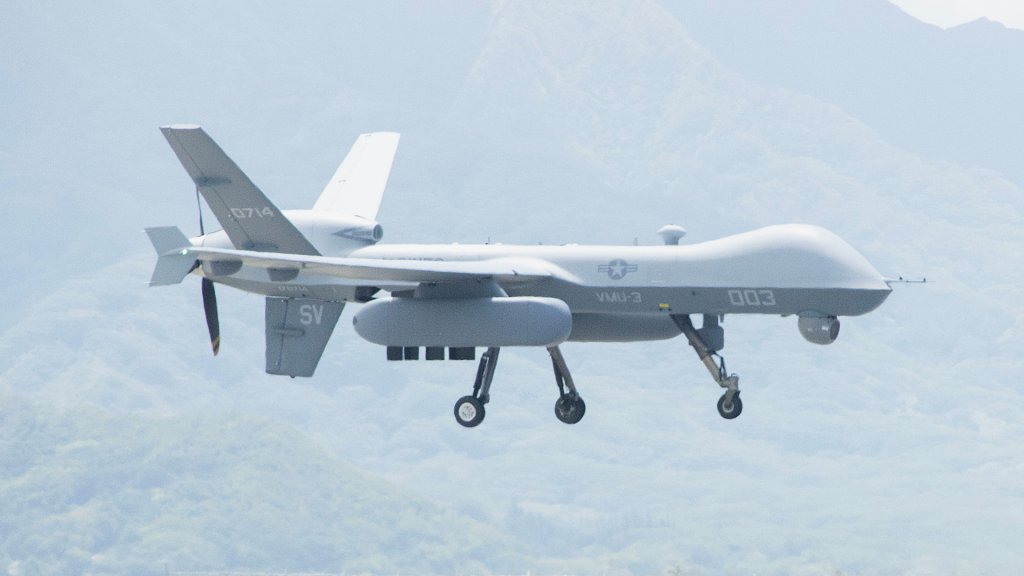
RDESS/SOAR was initially tested by the Air Force in 2021, but not much more has been heard about the pod until today. It is unclear when the Marines first fielded it.
According to General Atomics, which makes the pod, “it is a broad spectrum, passive Electronic Support Measure (ESM) payload designed to collect and geo-locate signals of interest from standoff ranges.” That gives it the ability to collect enough data about the battlespace to better drive decisions while being far enough away from some kinds of enemy defenses to be able to survive.
It is a variant of the baseline Scalable Open Architecture Reconnaissance (SOAR) pod that enables the drone to detect enemy radar and communications emitters at standoff distances. It provides real-time targeting information which can be instantly disseminated for exploitation or stored for further analysis.
The 634-pound SOAR pod, mounted the Reaper can carry under its wing, was jointly developed by General Atomics and L3Harris.
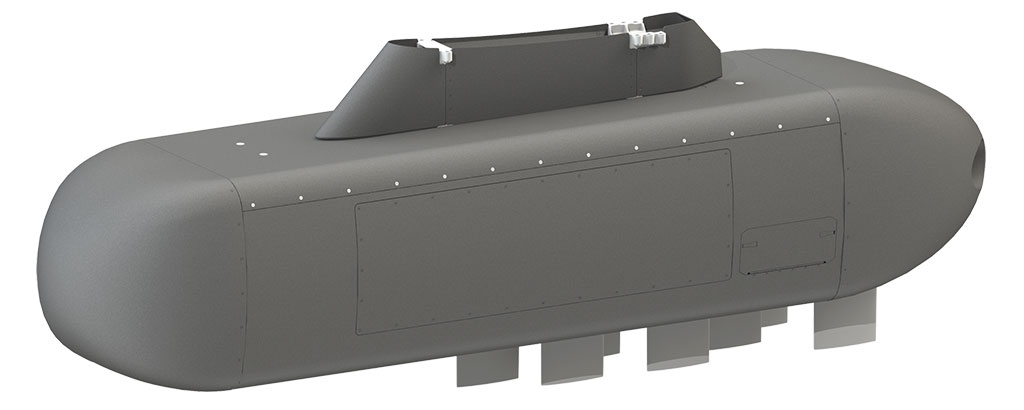
The Marine Corps was comparatively late to the dance when it came to Reapers, which have been used for nearly two decades by the Air Force and Central Intelligence Agency. It began operating two MQ-9s leased from General Atomics in 2018. In late 2020, the service was granted authorization to purchase the first two MQ-9A Block 5 extended-range Reapers. They offer a vast capability boost compared to the much smaller legacy RQ-7 Shadow and RQ-21 Blackjack drones. By 2025, the Marines plan to field 18 Reapers.
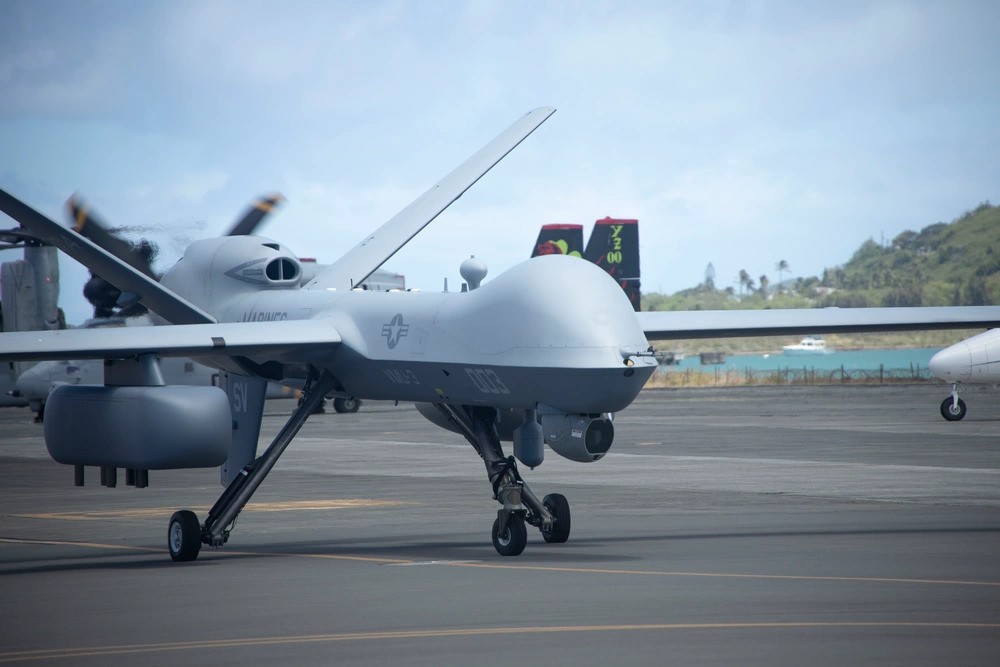
Adding the RDESS/SOAR pod continues the Marines’ leveraging the adaptability of the Reapers, rapidly reconfiguring them from hunter-killer drones to sensing platforms. The objective is to better support its new Littoral Regiments deployed as a stand-in force within China’s Weapons Engagement Zone. Those units are designed to “shut down sea lines of communications” should conflict break out with China. The Reapers will give Littoral Regiments “a sensing and making sense capability,” that will help to do that, Smith added.
Under the 2022 Marine Corps Aviation Plan, the USMC will use MQ-9As “with a suite of add-on pods to support the Marine Littoral Regiment as the stand-in force. The aircraft will provide Intelligence, Surveillance, Reconnaissance and Targeting (ISR-T) as well as performing additional missions such as Maritime Domain Awareness (MDA), Airborne Network Extension (ANE), Airborne Early Warning (AEW), and Electronic Support (ES).”
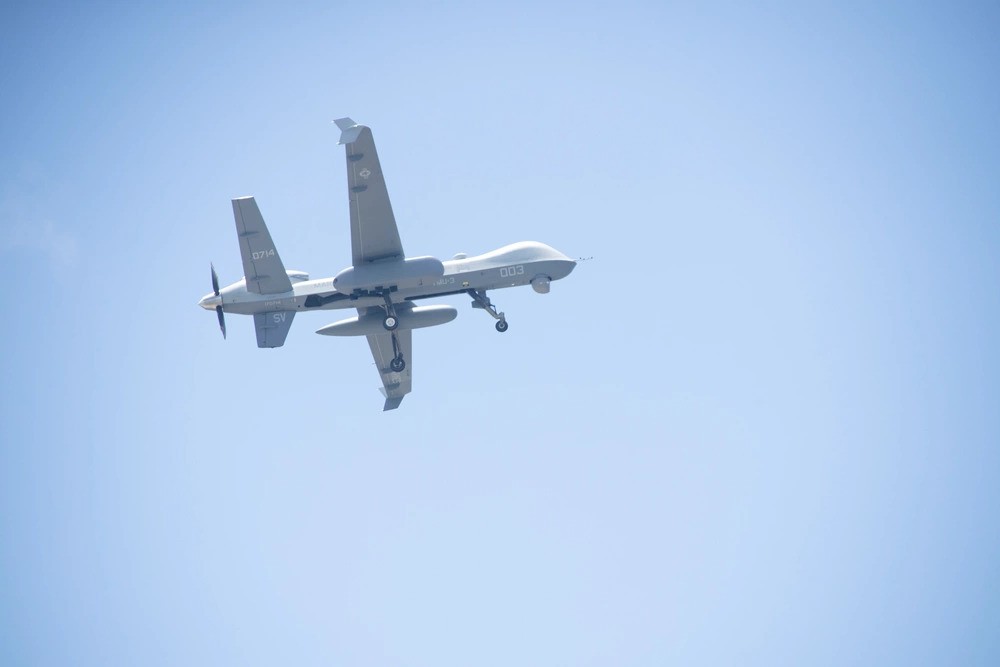
The broader restructuring all part of an effort by the USMC to return to traditional maritime roots after two decades of fighting in deserts and mountains. Smith, who served as assistant commandant under then-Commandant Gen. David Berger, is carrying on the latter’s concept for that change, initially called Force Design 2030. After assuming command, Smith shortened the title to Force Design so as not to limit the plan to a target date.
The Reapers will provide Marines with the sensing range they need to accomplish that goal and fight from far-flung locations if needed, Smith explained.
“If you’re going to be out-sticked by the adversary, then in terms of sensing and in terms of striking, then you’re no value,” he added. “You have to be able to sense at range. You have to be able to make sense of what’s happening. You have to be able to share that data ubiquitously across the battle space with the joint force, which is why our MQ-9 is so important.”
Being able to operate virtually undetected would greatly benefit the venerable Reaper, also known as the Predator B, in a China fight. Having first been deployed in the mid-2000s, the Medium Altitude Long Endurance (MALE) drones have flown almost exclusively in permissive airspace over Afghanistan, Iraq, Syria, Somalia, the Red Sea region, and elsewhere. Even then, they were not impervious. During its current campaign against shipping, the Houthis have shot down at least four, including three in May alone. You can see a video of the November 2023 engagement below.
Compared to flying against the Houthis, the Reapers will face far more robust air defense and sensing capabilities from China rendering the slow-moving, large signature drones vulnerable.
In general, unmanned aircraft that lack low observable features (stealth) and higher performance like the Reaper or the RQ-4 Global Hawk have been viewed as highly vulnerable in a future high-end conflict, although they could still execute support roles farther from the front lines. This has led to the Reaper especially being eyed by some as nearly obsolete for a major future fight, but some would disagree. General Atomics has pushed hard to develop solutions that could help keep the MQ-9 in any fight. The Marines clearly don’t think this is the case, at least with the help of this multi-function electronic support measures/intelligence and electronic warfare pod. With the help of this system, the Reapers are intended to not only survive, at least in semi-contested airspace, but to work as enablers for the greater force in the region, providing electronic warfare support and critical information on the enemy’s electronic order of battle and communications in real-time.
Reapers can also carry self-defense pods that are more oriented at countering direct, near threats. These could potentially be combined with RDESS/SOAR to increase survivability further.
You can read all about the USMC’s playbook for the MQ-9 and potentially more advanced type to come in this previous War Zone feature.
Above all else, the fielding of RDESS/SOAR is another step toward diversifying and distributing the USMC’s organic electronic attack capability, which was severely reduced with the retirement of the EA-6B Prowler nearly a decade ago. Many systems, including Intrepid Tiger II and the F-35’s advanced electronic intelligence and electronic warfare suite, have helped step in to fill some aspects of the service’s EW void and provide entirely new organic capabilities. New systems under test today, especially advanced and more survivable drones, such as the XQ-58 Valkyrie, are being eyed to supply even more cutting-edge and deeply penetrating EW support to the Corps.
So, the USMC is betting that its new pod will help protect the drones that carry them so they can provide the long-range, long-lasting sensing needed to fight in the vastness of the Pacific. Should current tensions devolve into armed conflict, the Chinese will provide an answer on how well that wager turns out.
Contact the author: howard@thewarzone.com
